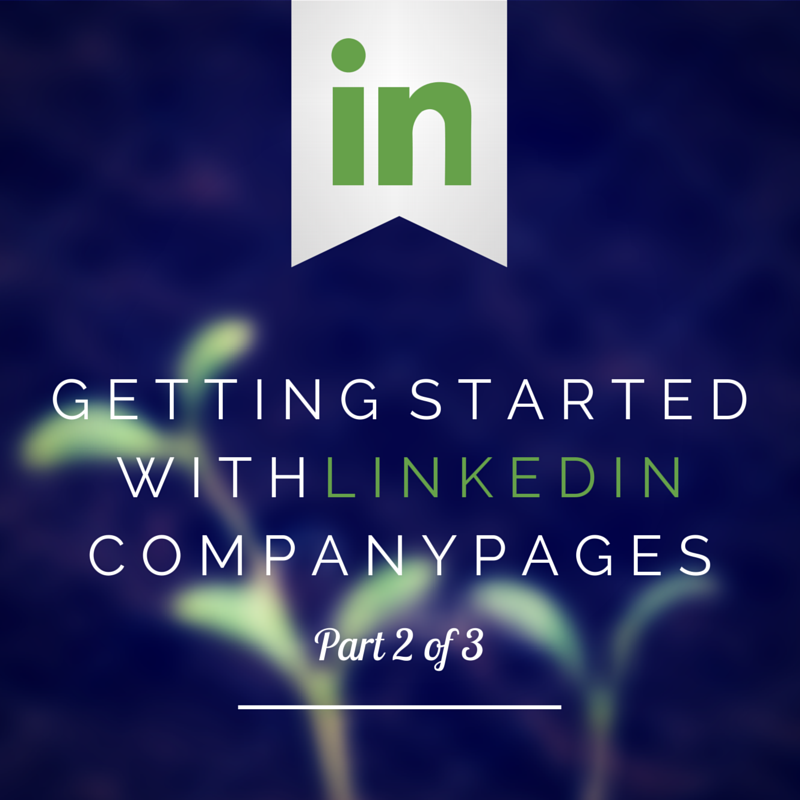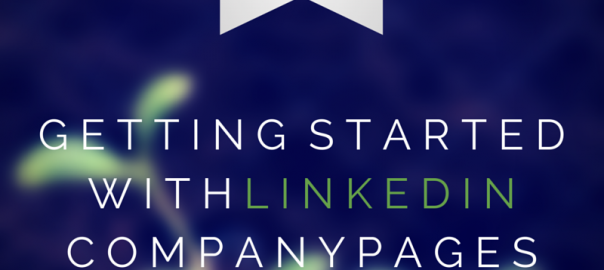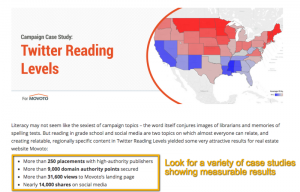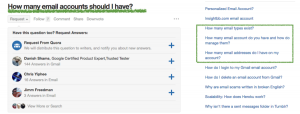 In part one of Setting Up Shop on LinkedIn Company Pages, I briefly explained the importance of LinkedIn and why it’s imperative for both B2B and B2C companies to use as a marketing tool. I also covered the technicalities of creating a LinkedIn company page and how to start building a following. But now that your page is set up and your followers are in place, what’s next? The second part of our three-part series explains how to manage your company page and what types of content are appropriate for sharing. Read on to get started in no time!
In part one of Setting Up Shop on LinkedIn Company Pages, I briefly explained the importance of LinkedIn and why it’s imperative for both B2B and B2C companies to use as a marketing tool. I also covered the technicalities of creating a LinkedIn company page and how to start building a following. But now that your page is set up and your followers are in place, what’s next? The second part of our three-part series explains how to manage your company page and what types of content are appropriate for sharing. Read on to get started in no time!
Managing and Updating Your Page
Now that you have followers, you’ll want to provide interesting and helpful updates to keep them interested in your content. Your followers can be employees, prospects, competitors—and as long as they are following your company page, they will have access to your updates in their own personal news feed.
To send updates from your company page, you must first login to the personal account that was used to create the company page. To access your page, locate the top navigation bar and hover over “interests” and then click on “companies”. You’ll see your company page listed on the right of the page, so click on it to share updates to your followers or make edits to your page. From here, you will also be able to grant access to other colleagues to manage the page and provide updates from logging into their personal accounts if needed.
Once you access your company page, you’ll see a text field at the top that reads “share an update” with the option to choose your audience. I normally suggest sharing the content to “all followers” as long as it’s relevant to the majority of those who are following you. If you choose “target audience”, you’ll be prompted to a list of different criteria that will filter specific followers to view that unique update. This setting can be changed every time you share an update to ensure your message is relevant and tailored to your desire audience.
Once you share updates, you’ll be able to view them on your LinkedIn company page underneath your summary. This is where you will be able to engage with followers and moderate any comments your posts may receive.
What to Share—and When to Share it
In regards to types of content to share—and how often you should be sharing—it varies on the industry. However, you always want to be sure that your content is relevant to your audience. What information is helpful to them? How can you get your brand message across in a professional manner? Before I create any social media content for any of our clients, I put together a social media strategy that breaks down the purpose of the content, where I’ll source the content from, etc., so I’m always posting with a purpose and goal in mind. Then, I have a guide to follow when I’m actually crafting each social content schedule for each different time period. You should always be posting with a purpose.
So what types of content are typically included in a robust social media strategy? I suggest sharing blogs from your website; these not only position your organization as industry experts but also drive traffic back to your website. It’s also important to share any company announcements that your followers would find useful, such as notifications about events or important meetings. Also share valuable content from outside reputable sources. For example, our social media strategy at GRM includes a plan to share helpful articles about marketing that our target audience would find valuable. We typically share articles from Mashable, Inc.com, Forbes, FastBusiness, HubSpot and more, which are all publications that are seen as “thought leaders” in our industry. Sharing external content helps build trust with your audience by showing that third parties are reinforcing your message.
Something else that I stress when it comes to a social content schedule is that you should always keep a healthy balance of your own marketing messages and external content. I always push the “80/20 rule”, which means 80% of the content you share on social media should lead to external content and 20% to your own website or about your own particular brand. Yes—followers access your page to receive your updates—but it shouldn’t be all about you. Constant self marketing and advertising will push them away and lead them to hit the “unfollow” button.
Many ask how much posting is too much or too little. It depends on the platform, but sharing shouldn’t be overdone on LinkedIn. This means that I would suggest a minimum of two and maximum of 7-10 posts per week from your company page. Always remember that this is a networking platform and you’ll want to find the perfect balance of content that your target audience will enjoy. Again, there aren’t any rules set in stone in regards to post volume but you’ll want to be courteous to your followers—and avoid bombarding them with your sales pitch. Whatever you do, keep your LinkedIn content professional. Share content that will position your business as industry experts. Offer valuable resources to your followers. Use proper grammar and spelling at all times. If you question it, don’t post it.
Once you’ve got that down, you’re more than halfway to using LinkedIn in the most effective way to market your business. Questions? Feel free to comment below. And of course, stay tuned for the next and last part of my Setting Up Shop on LinkedIn Company Pages blog series to learn about best practices for engagement and analytics on this platform!
(231)
Report Post






